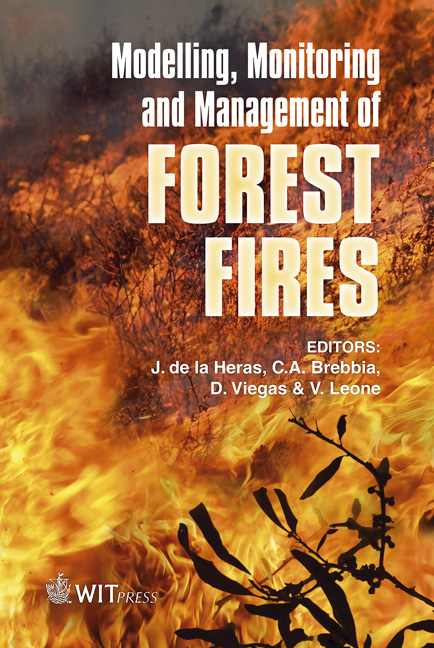Aleppo Pine Regeneration After Fire Along An Aridity Gradient
Price
Free (open access)
Transaction
Volume
119
Pages
7
Page Range
289 - 295
Published
2008
Size
292 kb
Paper DOI
10.2495/FIVA080291
Copyright
WIT Press
Author(s)
J. De las Heras, D. Moya, F. R. López-Serrano, M. Eugenio & J. M. Espelta
Abstract
In the Mediterranean Basin, the number of large-scale fires and, consequently, the area of regenerated forests after a fire have been increasing over the last few decades. Mediterranean pine tree stand regeneration shows differences in growth and reproductive characteristics depending on site quality. Aleppo pine (Pinus halepensis Mill.) is an important obligate seeder species occupying a large surface in this area. In order to study growth and reproductive characteristics depending on different climatic conditions, six sites with similar characteristics (edaphic, exposure, slope) burned in the summer of 1994 were selected along a climate gradient. Different precipitation values determined three different ombroclimates: dry-subhumid, dry and semi-arid. Ten years after the fires, data on growth and cone production were collected from these areas in order to study the pattern of growth and reproduction and the influence of site quality (climate) on them. Results showed significantly higher values for growth and several cone characteristics; furthermore, they were positively related to site quality. Viability and seed germination percentages were higher in sites located in dry-subhumid areas. Serotiny was highest in dry locations (southern sites), and lower percentages were found in low tree density sites. The number of reproductive trees was higher northwards and the reproductive phase was reached in younger stands with lower tree density. In conclusion, results showed a geographical gradient based upon growth and reproductive characteristics, decreasing southwards in contrast to serotiny, which increases in southern sites. Density was found to be a significant factor influencing overall pine stand development. Keywords: climatic gradient; serotiny; reproductive characteristics; site quality.
Keywords
climatic gradient; serotiny; reproductive characteristics; site quality.





